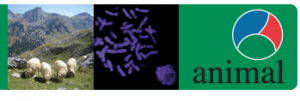 A researcher who published findings questioning the safety of genetically modified organisms has lost a second paper following concerns of image manipulation.
A researcher who published findings questioning the safety of genetically modified organisms has lost a second paper following concerns of image manipulation.
Last week, the journal animal retracted a 2010 paper by Federico Infascelli, an animal nutrition researcher at the University of Naples, which claimed to find modified genes in the milk and blood of goats who were fed genetically modified soybeans. The retraction stems from an investigation that concluded the authors likely manipulated images, according to the note. Earlier this year, another journal retracted one of Infascelli’s papers that contained a duplicated figure.
In February, Italian paper La Repubblica (which we read with Google Translate) reported that the university found problems in three of his articles and issued a warning.
Here’s the retraction note for “Fate of transgenic DNA and evaluation of metabolic effects in goats fed genetically modified soybean and in their offsprings:”
From late September 2015, we received several expressions of concern from third parties that the electrophoresis gels presented might have been subject to unwarranted digital manipulations (added and hidden bands or zones, including in the control samples and the DNA ladder). A detailed independent investigation was carried out by animal in accordance with the Committee on Publication Ethics (COPE) guidelines. This investigation included an analysis of the claims using the figures as submitted, and reassessment of the article by one of the original peer-reviewers in light of the results of the analysis. The authors were notified of our concerns and asked to account for the observed irregularities. In the absence of a satisfactory explanation, the institution was asked to investigate further. The University of Naples concluded that multiple heterogeneities were likely attributable to digital manipulation, raising serious doubts on the reliability of the findings.
Based on the results of all investigations, we have decided to retract the article.
The 2010 paper has been cited 19 times, according to Thomson Reuters Web of Science.
According to a January news story in Nature, both now-retracted papers were among three that were investigated following concerns raised by Elena Cattaneo, an Italian senator and a neuroscientist at the University of Milan. Nature explains that she,
noted what looked like problems in all three papers: sections of images of electrophoresis gels appeared to have been obliterated, and some of the images in different papers appeared to be identical but with captions describing different experiments.
She then commissioned Enrico Bucci, head of the biomedical services and information consultancy firm BioDigitalValley in Aosta, Italy, to carry out a forensic analysis of all three papers. The analysis suggested that the papers did indeed contain manipulated and reused images. Cattaneo contacted the journals concerned in September last year, and in November forwarded the analysis to the University of Naples.
Cattaneo told Nature:
“The case is very important also because these papers have been used politically in the debate on GM crops.”
According to Nature, the third paper cited in the investigation is “Genetically modified soybean in a goat diet: Influence on kid performance,” published by Small Ruminant Research and cited twice. In that 2015 paper, Infascelli and his colleagues found mother goats fed GM foods produced colostrum that contained significantly less protein and fat, and their kids grew more slowly. We’ve contacted the journal to see if it plans to make any changes to the paper.
We’ve also reached out to the first and corresponding authors on the recently retracted paper, Tudisco Raffaella and P. Lombardi, both affiliated with the University of Naples.
Hat tip: @mem_somerville
Like Retraction Watch? Consider making a tax-deductible contribution to support our growth. You can also follow us on Twitter, like us on Facebook, add us to your RSS reader, sign up on our homepage for an email every time there’s a new post, or subscribe to our new daily digest. Click here to review our Comments Policy. For a sneak peek at what we’re working on, click here.
I’m curious, in these cases of image manipulation, what the researchers were actually thinking. Are they deluding themselves into running experiments until they get their expected outcome, then pasting the gels/blot images from their “successful” runs together, and blame the many “failed” runs on bad hands or something?
If it is intended fraud from the outset, it would obviously be easier to just put DNA that gives the desired banding pattern in the lanes and fraudulently label them.
Enrico Bucci has put together slides of the irregularities he found in images in several papers. He highlights in red and explains his findings here: http://www.slideshare.net/EnricoBucci1/infascelli-final
When I saw this piece note that the paper had been cited 19 times, I went to Google Scholar to see where. I entered the doi: 10.1017/S1751731110000728. Then I clicked “cited by 47” to see what those sources were.
The problem with this sort of thing is not only that it’s cited in the mainstream scientific literature. The problem is that it’s cited by cranks, who will never stop citing it.
It’s also kind of worrisome that “ayurveda-florida.com [PDF] GMO myths and truths” is something that appears in Google Scholar.